
We are celebrating 15 years — and counting — of stories that are deeply researched and deeply felt, that build a historical record of what the city has been.
We are celebrating 15 years — and counting — of stories that are deeply researched and deeply felt, that build a historical record of what the city has been.
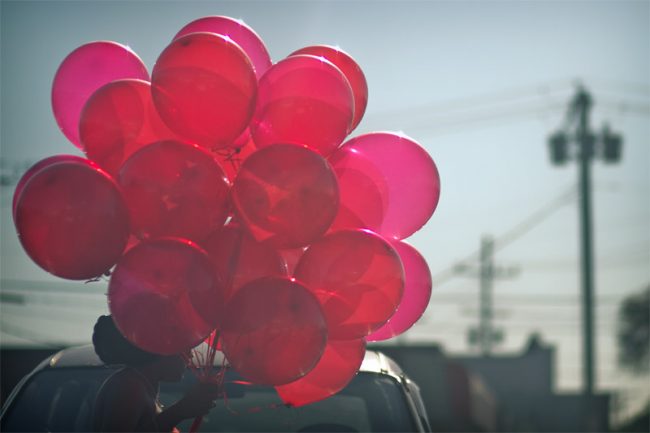
Image courtesy of Seema Krishnakumar
Happy new year! As we settle into writing a six at the end of our dates, we at The Architectural League are celebrating a seven — seven years publishing Urban Omnibus as of this very day.
The last year was a major one for UO. We bid adieu to Omnibus’ founding editors, Cassim Shepard and Varick Shute, and began a search for our next editor. All the while, we continued to bring you the same nuanced explorations of urban space and life that have made Omnibus an integral part of discourse on the built environment in New York City and, as evinced by our national and international readership, across the country and world. When we launched UO in 2009, we sought to bring fragmented disciplines and distinct frames of analysis on the city under one tent. We consider New York a laboratory for ideas and approaches with lessons for cities everywhere. Narrative observations on neighborhoods live next to GIS-driven inquiry into housing and economic development patterns. Photographic essays bump up against interviews with practitioners — architects, planners, lawyers, health professionals, hydrologists, activists — on everything from public housing to transit infrastructure.
We have now published over a thousand stories, profiles, projects, interviews, and reports in the pursuit of defining and enriching what we call the culture of citymaking. This approach makes clear just how interconnected architecture, planning, art, policy, and activism are in how our places are shaped and what that means for the wellbeing of our neighbors, communities, and world.
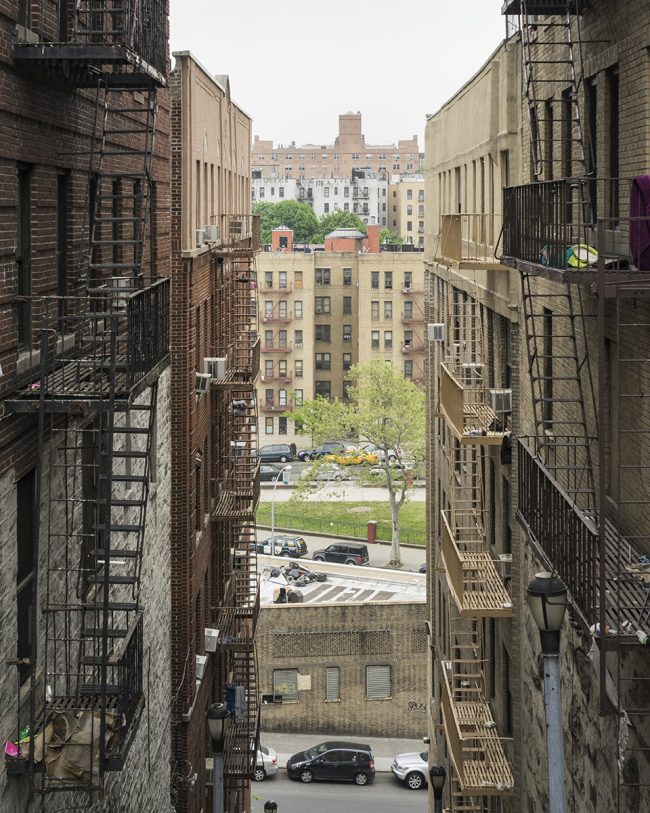
167th Street at Anderson Avenue in The Bronx | Photo by Kris Graves in “Bronx Contours: A Photo Essay“
In 2015, we brought you wider coverage of New York’s five boroughs than ever before to make good on our mission of learning from exceptional projects and examples found in every neighborhood. For “Bronx Contours,” photographer Kris Graves laced up his Nike Air Max 90s to capture how topography manifests in the West Bronx, traversing 20 miles from Yankee Stadium to Riverdale. The power of photography to reveal the city continued in an interview with Rafael Herrin-Ferri on his project All the Queens Houses, a documentary exploration of Queens’ contemporary vernacular housing stock complete with pithy titles and captions that illustrate how building forms change to meet evolving demands and desires. We also gave Staten Island the attention it deserves, in stories on post-Sandy managed retreat from the coast, the redevelopment of a former poor farm into a luxury senior community, and an inside look at the social infrastructure provided by a maker space.
We experimented with new ways of representing the city. In “Tune In,” Anne Guthrie introduced us to the aural environment of New York through soundscapes of everyday places. We started a longitudinal photo essay in partnership with Freshkills Park Alliance to capture change across seasons at the former landfill now metamorphosing into a park. We introduced new voices — building on our robust archive of interviews with practitioners and public servants, we also sought out the many other individuals working behind the scenes, under the ground, and high in the sky whose crucial contributions to the city are often taken for granted. Our Citymakers series has, so far, brought you the perspectives of an ad painter, an e-waste recycler, and, today, a bridge inspector.
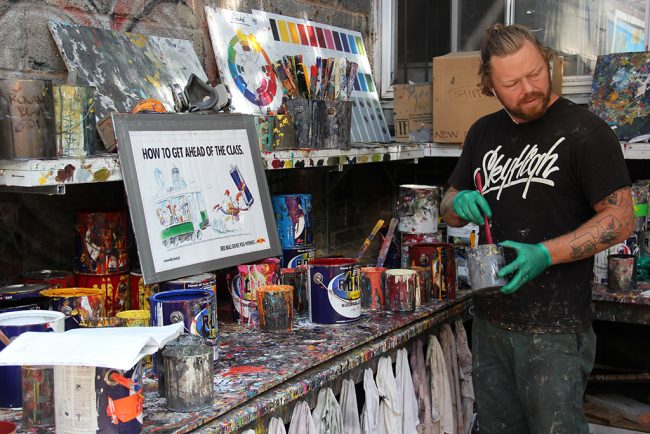
To inaugurate our Citymakers series, we spoke to Jason Coatney, the lead ad painter for Colossal Media, an outdoor advertising and public art company. Above, he mixes paint ahead of a job.
Amid these new endeavors, we’ve also kept churning out our bread and butter, publishing the most innovative and interdisciplinary design ideas and projects conceived in the public interest, from Shannon Mattern’s research on the largely invisible logistical systems that support our libraries to Juliette Spertus and Benjamin Miller’s proposal for a pneumatic waste system affixed to the High Line.
In 2016, we’ll continue to present these vital investigations. Look for features on the rise and implications of co-living in New York, a conversation on the potential conflict between good architecture and good urbanism, and a panorama of the surprisingly vast world of salt in the city. In the coming weeks, we’ll also roll out the winning stories from our As Seen On [ ] writing competition, complete with striking illustrations by Martina Paukova. Be sure to come celebrate the winners and the launch of a book collecting their work at Greenlight Bookstore a week from today. We’ll raise a toast to seven years and many more.
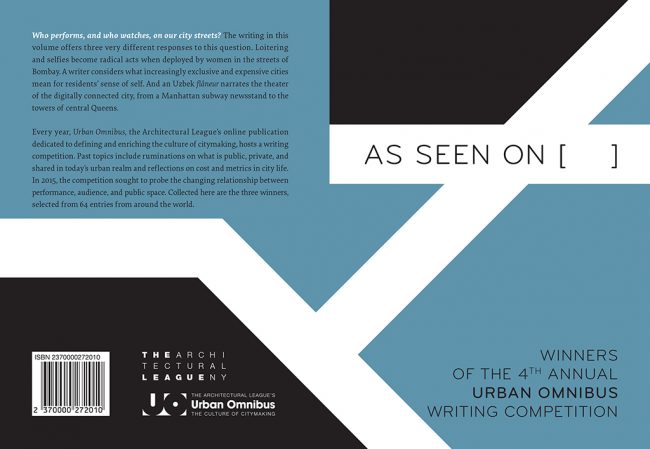
The cover of the book, designed by Jena Sher, collecting the winners of the 2015 Urban Omnibus writing competition.
Among our resolutions for the new year, you can count a continued effort to capture the diversity of New York by expanding outer-borough coverage (watch out Queens) and a renewed push to provide opportunities for our readers to get out and see the city in the flesh through novel, exciting lenses (Omnibeers included). And while we are proud of the archive of promising approaches to citymaking that we’ve collected, we hope to expand the possibilities for their implementation by reaching new audiences and making our work even more applicable to citymakers, from the mayor’s office to the block association enthusiast.
The line between an Urban Omnibus writer and reader has always been a deliberately fine one, so we very much look forward to hearing from you about what you want UO to be in 2016. You can always reach us with pitches or ideas at info@urbanomnibus.net or on our submissions page. We think of Urban Omnibus not just as a publication, but as a community, so please let us know what you think of our pieces, how you’re using the site, and what you’d like to see more of. We’re all ears.
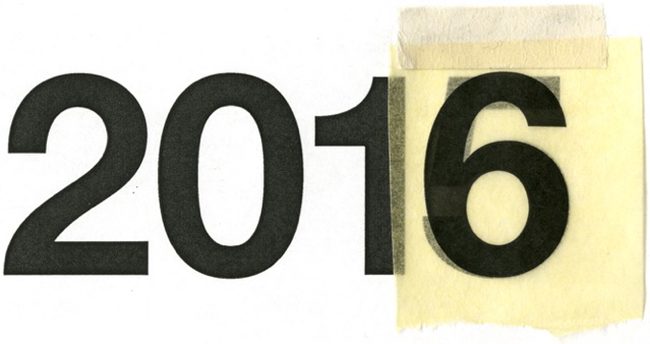
Support Urban Omnibus in 2016 through a tax-deductible donation to The Architectural League of New York by clicking above!
As a small, free, non-profit publication, we rely on our readers not just for their financial support, but for their engagement — you are our eyes on the street, the minds that make this city and publication whir. So don’t be strangers. Thank you to all who have contributed to and supported Urban Omnibus over its first seven years — you’ve cast the foundation of a one-of-a-kind platform that will continue to thrive through collaboration, generosity, and forward thinking. Onward!
The views expressed here are those of the authors only and do not reflect the position of The Architectural League of New York.